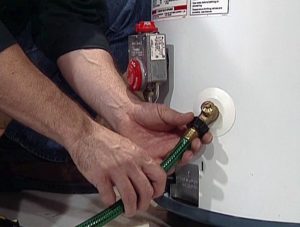How to Drain Your Water Heater, and Why!
By Wilmer Romero on Aug 14, 2017 in Water Heaters
Minerals such as manganese and calcium are naturally incurring ingredients inside your city or well water supply. And, in the right amounts, they’re good for you, just as many other vitamin and mineral supplements are.
But you’ve heard of too much of a good thing, of course. Well, that applies to calcium and manganese, too, as an over-concentration in your water supply can create hard water conditions, and that’s bad news all the way around, particularly for your storage tank water heater.
Why it’s Important to Drain Your Water Heater
Over time, hard water can hamper your water heater’s ability to operate up to its maximum potential. Further, they can  corrode the inside lining of your tan, thus causing damage and possibly even cutting short your system’s expected life span.
corrode the inside lining of your tan, thus causing damage and possibly even cutting short your system’s expected life span.
How to prevent all that from happening? One way is to flush and refill your storage tank once a year. Here’s how:
- Turn off the incoming water supply to your water heater.
- Turn off the gas or electricity used to heat your unit and allow the tank to cool down. This is important to your personal safety.
- Attach a hose to the drain valve at the bottom of the tank.
- If you don’t have a floor drain near your water heater, run the hose outside so you can drain the water a safe distance from your house or into the nearest sewer drain.
- Open the drain valve and drain a few gallons of water. The water will probably look discolored from the build-up of mineral deposits. Then, keep draining the tank at least until the water turns perfectly clear.
- Close the drain valve and turn the incoming water supply back on. Make sure to leave one of your home’s taps open while the tank is refilling to release any air out of the system.
- Once the tank is full, turn the gas or electricity supply back on.
Don’t have time for this sound water heater maintenance procedure? Then contact Your 1 Plumber today and we’ll be glad to do it for you while inspecting the entire system to ensure it’s running as efficiently and safely as possible.

Post a Comment
You must be logged in to post a comment.